“OPEN
CALL”
ANNOUNCING THE WINNERS
We’re delighted to present the results of our August 2023 competition judged by Helen Healy, Head of Pictures at The Financial Times.
“I dwell in possibility…” – Emily Dickinson
The brilliance of photography can be in its lack of constraints – the work we create only limited by our interests and imaginations, the possibilities near endless. Removing the theme as we do with our Open Calls provides a space for all types of photography, entrants invited to submit their standout standalone images, unshackled by a brief. Yet it also creates a challenge for the jury – how can you form a selection with no thematic criteria to guide you. The answer of course is to rely only on the universal qualities of good photography – technical execution, storytelling, emotion and originality. To celebrate photography for photography’s sake.
And so here we find here a selection of 20 thematically and stylistically varied images that stand out for their skilled production, interesting subject matter and creativity, and that between them represent an engaging selection of contemporary photography. We invite you to dwell in the possibilities…
Congratulations to the selected photographers, and thank you to everyone who submitted. You can join the discussion on Facebook and Instagram.
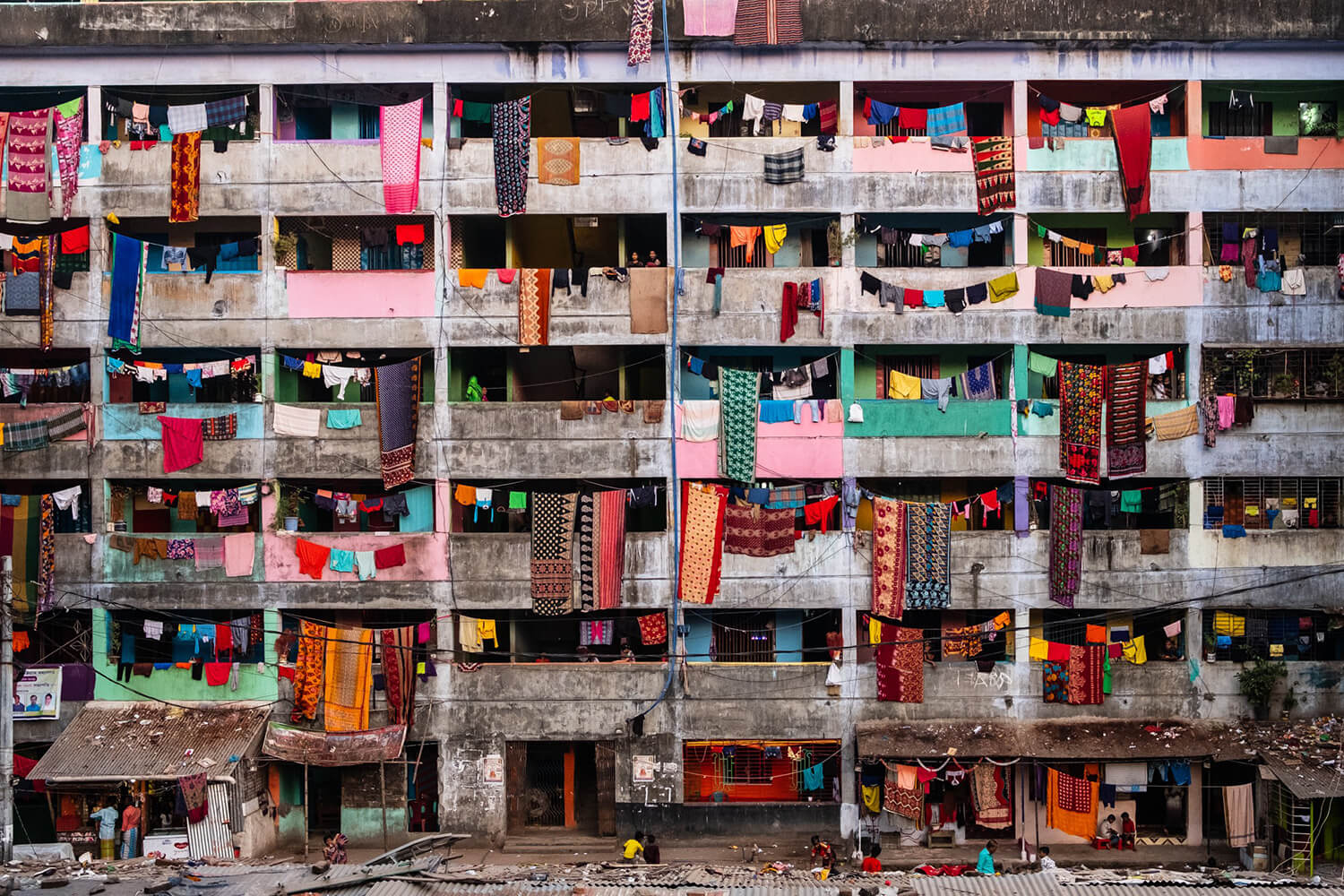
1ST PRIZE: DIDIER VANDERPERRE
The variety of colours and patterns of the fabrics hanging from the balconies of this housing block jump out at the viewer. I love the contrast with the drabness of the distressed concrete and the shack at the left of the frame. This photo captures a rich slice of daily life in this populous city in Bangladesh.. – HELEN HEALY
Initially the image appears like a rich tapestry telling a story of urban dwelling, but as the viewer surveys the scene in further detail, elements of dilapidation and poverty begin to dominate. ‘The Sweepers’ are a neglected community of people who have for generations dedicated their lives to sweeping and cleaning the waste of their local area. Their colourful items of clothing and domestic materials hang over the balconies of this concrete stack like flags or banners, on show as a celebration of identity, community and resilience. A key image as part of a wider story. – LIFE FRAMER
Photographer statement – Sweeper colony housing, Chattogram, Bangladesh.
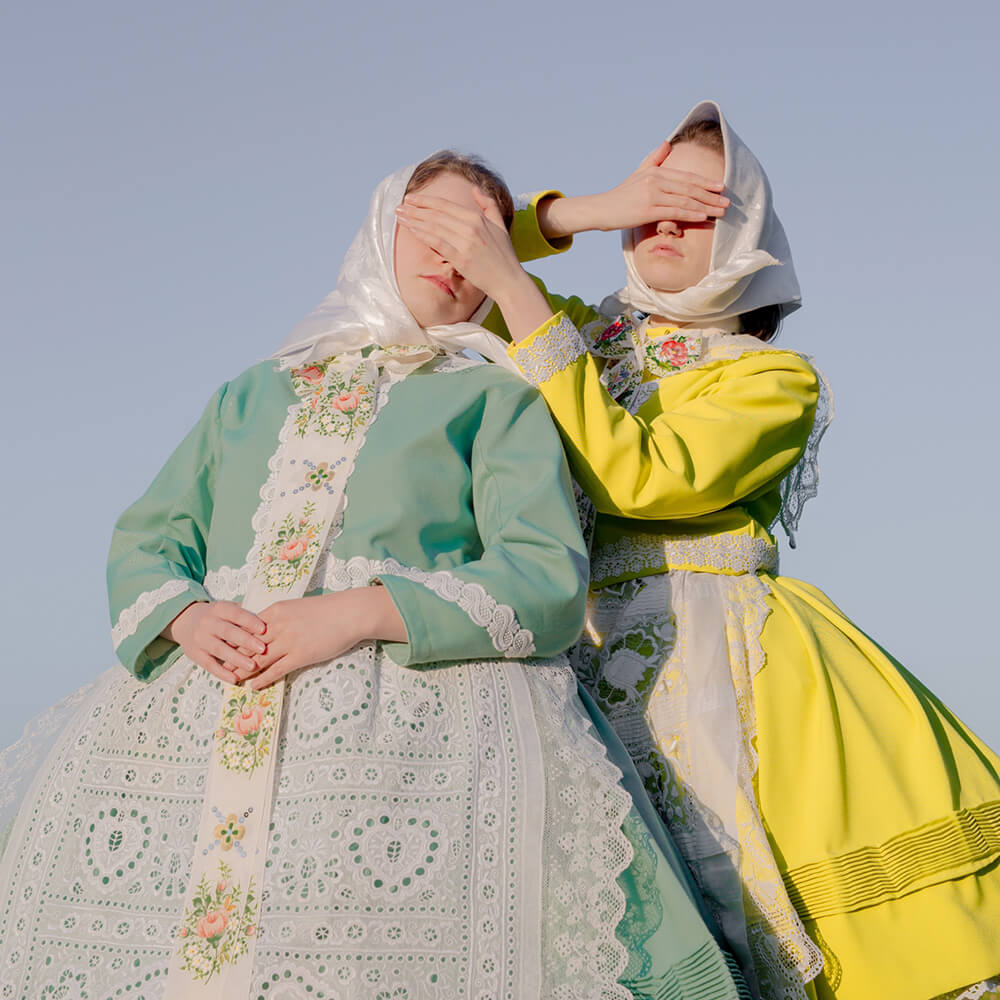
2ND PRIZE: WLASTA LAURA
I love the composition of these two young women dressed in elaborate folk costumes. Their poses and the artistry of the embroidery and lacework on their colourful dresses is captured beautifully by the photographer.. – HELEN HEALY
A beautifully composed image where the photographer presents a constructed aspect of folk culture which leaves the viewer to consider how these subjects and their attire represent this culture, and how our own society has evolved to see them as fanciful and almost fictional. The subjects remain anonymous through simple posing, allowing them to become canvases fully showcasing the detailed clothing for the viewer to examine and explore. An exceptional image representing many themes within a wider subject of communication, the human body and fashion as a language. – LIFE FRAMER
Photographer statement – We can trace sexual motifs in folk culture and folk costumes from ancient times, for example the way costumes are designed – giant skirts, narrow waists, high shoes, bright colours. This is no longer known today, but for example, the colours and flowers on costume bows and embroidery were chosen to evoke subconscious sexual imagery. In general, the richer the costume, the richer the area from which it originated. Through costumes, people also used to associate and get to know each other at traditional feasts, which were and are used to celebrate the harvest and to celebrate fertility.
The design of the costumes themselves has always awakened and encouraged all sorts of fantasies. Folk culture generally brings spiritual and sexual awakening and celebrates fertility. Moreover, traditional costume has a special power to give women and men self-confidence and improve their relationship with their own bodies and sexuality.
The Unspoken Things photographic series is therefore inspired by ethnographic texts that deal with the body as a cultural phenomenon. The photographs also draw on the ritual and symbolic meanings of fertility and sexuality that were and are found in folk culture and reflected in the folk costumes. Today the prevailing opinion is that the costume is chaste, that it is worn to church and that the presence of a naked body could be shameful. However in the past, this was not true…
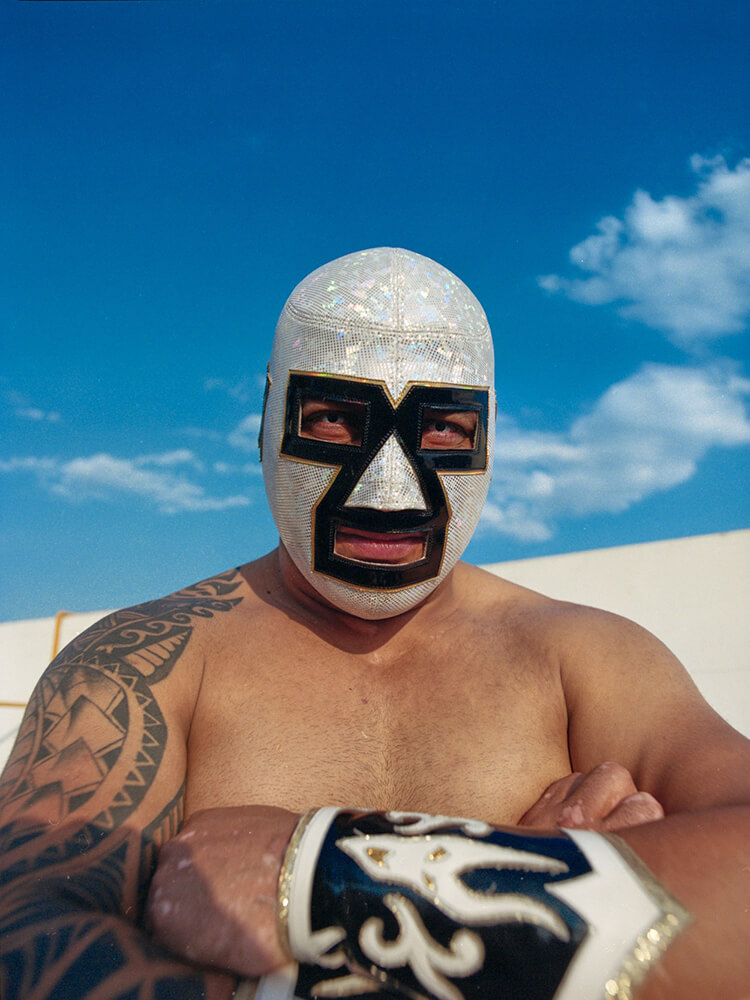
MATT BRAMSTON
A vibrant and simple portrait where the frame-filling composition perfectly emphasizes the outsized character and machismo of this Luchador. The intensity of his eyes reminds the viewer not to underestimate the flamboyant attire or theatrics of this sport – there is a skill and dedication involved that is so significant it is passed from generation to generation. The photographer’s aim to share these individuals’ stories of tradition nurtured by its communities and families is a topic ripe for an interesting and insightful body of work. – LIFE FRAMER
Photographer statement – This project follows a family of Luchadores in Mexico City. It explores not just the athleticism and dedication in training, but family tradition and legacy. Dr Karonte comes from a succession of Luchadores and that tradition is being kept alive through his nephew and children.
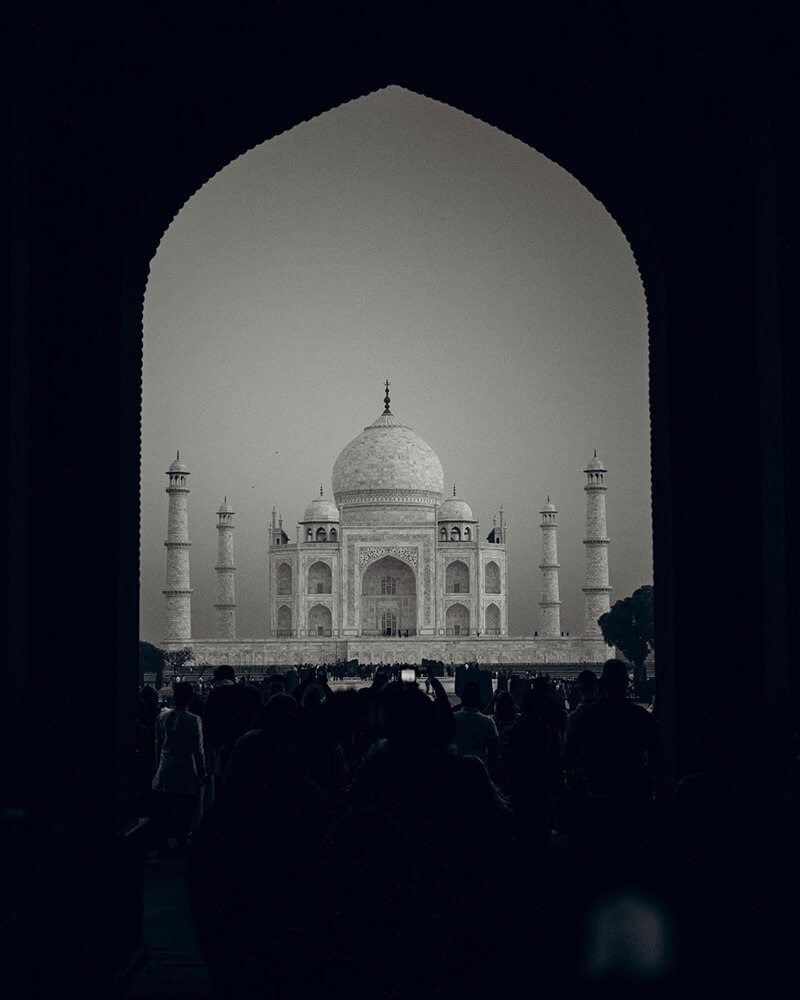
SRIRAM RAJMOHAN
The photographer intentionally balances the shadowed border to give it as much prominence as the iconic view at the centre of the scene. The black and white aspect gives the image a timeless and cinematic quality – even the caption a nod to the film namesake. However these dark, shadowy edges don’t completely mask the crowds of people, as their silhouettes dominate the bottom half of the frame. The photograph invites the viewer to take the time to truly contemplate the attraction of this architectural wonder, and its symbolic expression of Indian heritage. An image quite unlike the many thousands of others that will have been taken from that angle that day. – LIFE FRAMER
Photographer statement – Wah Taj!!
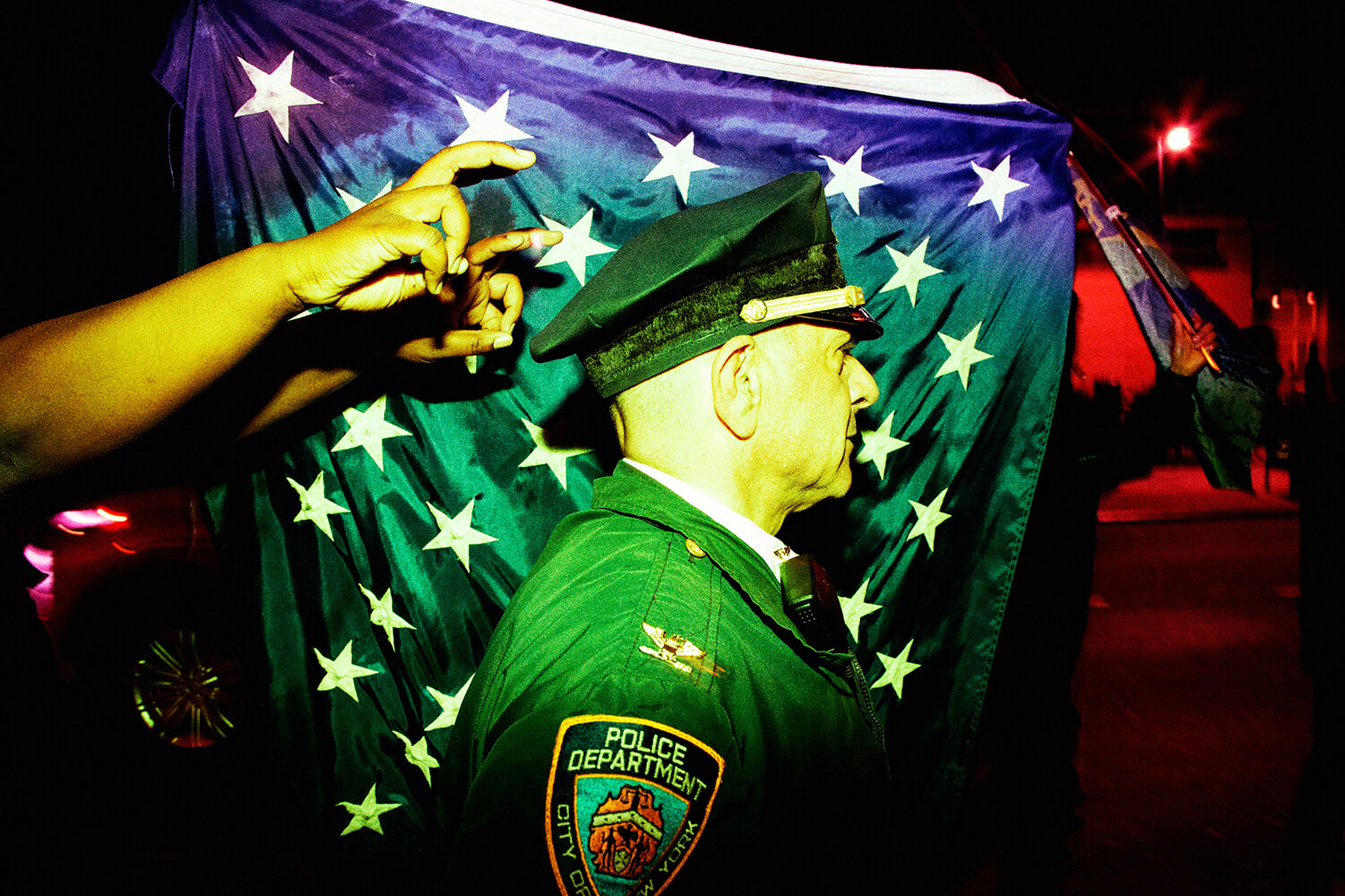
ANDREW HALLINAN
The hands appear arching across the frame like mocking reminders of reality on the officers shoulder, his uniform taking on a toxic green appearance under the distorted hue of synthetic light as if metaphorically depicting another side to the police force. Even though the photographer admits at times it can be difficult to piece a story together, they continue to show restraint and respect by ensuring the protestors’ identities are protected – protestors who are already putting so much at risk just to speak out and stand up to police brutality, corruption and racism. The photographer’s work is one of activism in itself, they are unafraid to document these scenes of tension and threat, and include their own personal insights through their captions. – LIFE FRAMER
Photographer statement – Since I do not show protestors’ faces in my work without permission, I sometimes struggle putting together my edits. I struggle because it can have the side effect of hiding the violence present. I have to remind myself that the violence is implicit – implicit in the badge, implicit in the uniform, and implicit in the very existence of police. The week after Jordan Neely’s murder saw escalation and brutality from the NYPD that I hadn’t witnessed in a long time. As many theorists throughout history have said – one of the defining features of a state is that it has a monopoly on violence. The killing of Jordan Neely shows cracks in this framework and reveals what has always been true behind it: the state does not have a monopoly on violence. When the state wishes, it will unofficially deputize vigilante citizens. These citizens are given privilege to enact violence, as long as it upholds white supremacy and enforces class hierarchy. They are permitted to act outside the confines of any rules and then are retroactively absolved of any wrongdoing.
Often the only thing that can change this retroactive absolution is a powerful and disruptive popular outcry and uprising. This is where the state’s monopoly on violence comes back in. The police have been violently cracking down on any dissent or any whisper of the name Jordan Neely. That whisper has become a flame that they are desperate to put out. In its response to the death of Jordan Neely, the state is signalling loud and clear that if you are poor and black, your life does not matter. In its escalated response to protest, the state is saying that if you dare to speak out, you will be assaulted, put in a cage, surveilled, and stalked through the subways by the boys in blue. Make no mistake about it, this is class war and white supremacy in action, upheld and spearheaded by our mayor Eric Adams – carried out by his foot soldiers, the police.
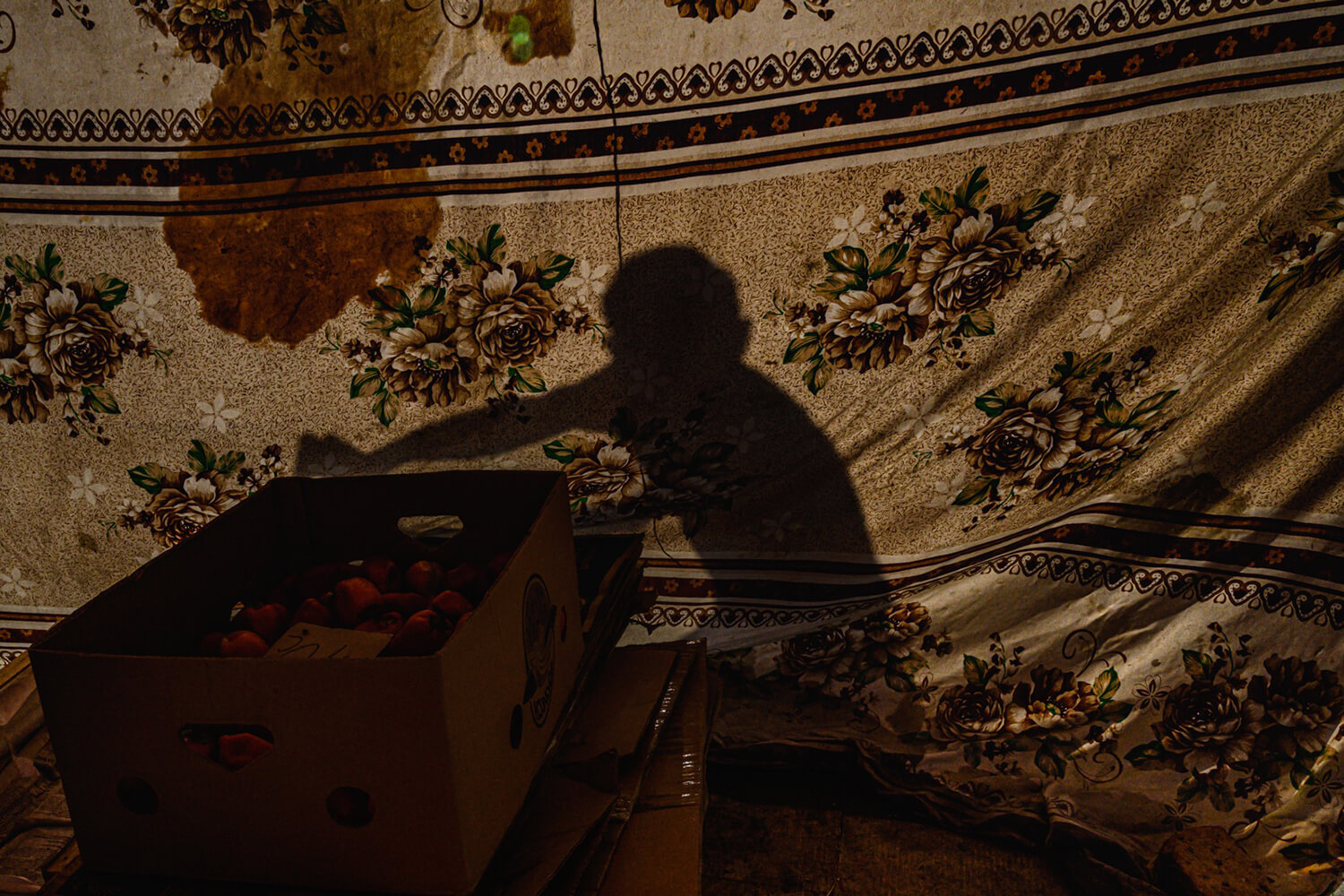
ANNA BIRET
An unknown subject lurks behind the cloth, as if attempting to steal a piece of fruit from the foreground placed box. The photographer has a curious and playful approach to their work, creating a character almost like that from a children’s storybook, allowing the viewer’s imagination and perceptions to take over and complete the photograph, their use of color and tone emphasizing the synergy of light and shadow. A charming and creative scene. – LIFE FRAMER
Photographer statement – From the series The Shadows of the Imagination. Light and shadow dominate our everyday life, often creating images saturated with mystery. We often seek refuge in the shadows that surround us. Sometimes a figure comes out of the shadows unexpectedly. Sometimes the sun together with the shadow and an admixture of color create unimaginably beautiful scenes filled with mystery, like theater scenes in which each of us is an anonymous actor in the depths of imagination, beauty, creativity. I love this atmosphere, I love capturing these moments that make every moment beautiful in ordinary everyday life.
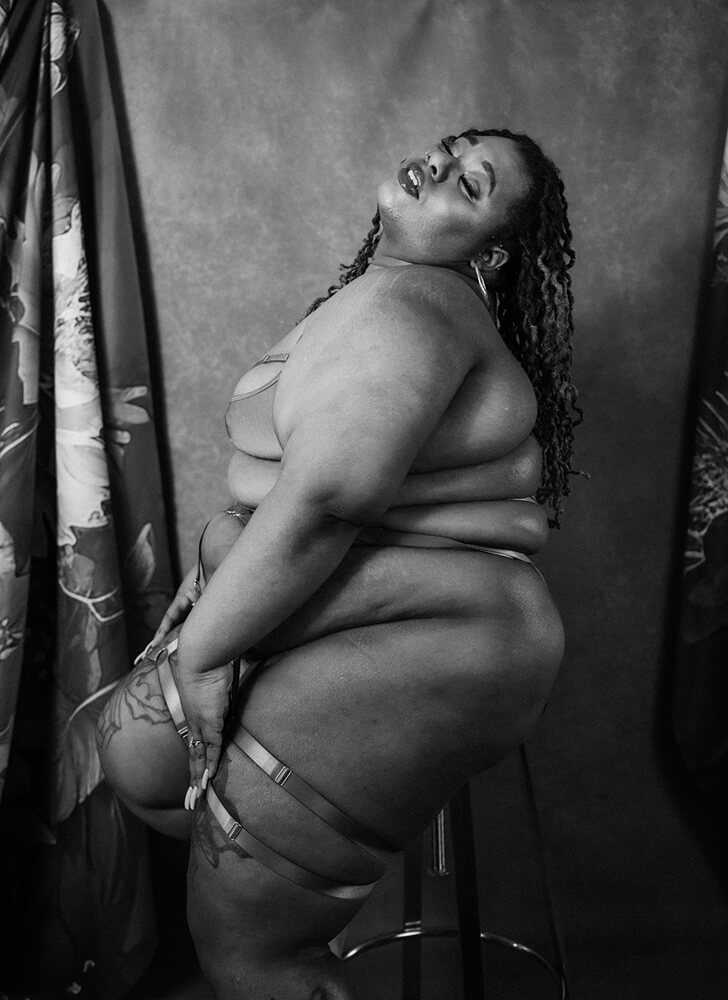
JASMIN JADE
The soft black and white tones of this portrait allow the viewer to observe a subtle celebration of body and sexuality. The mix of textiles in the backdrop contrasts with the subject’s long, white nails, and adds to the layers of sensual texture within the frame. The photographer captures the subject relaxed, head back and eyes closed as if they are lost in a moment, and not just sitting for a studio portrait. There is a great sense of freedom and contentment to this image. – LIFE FRAMER
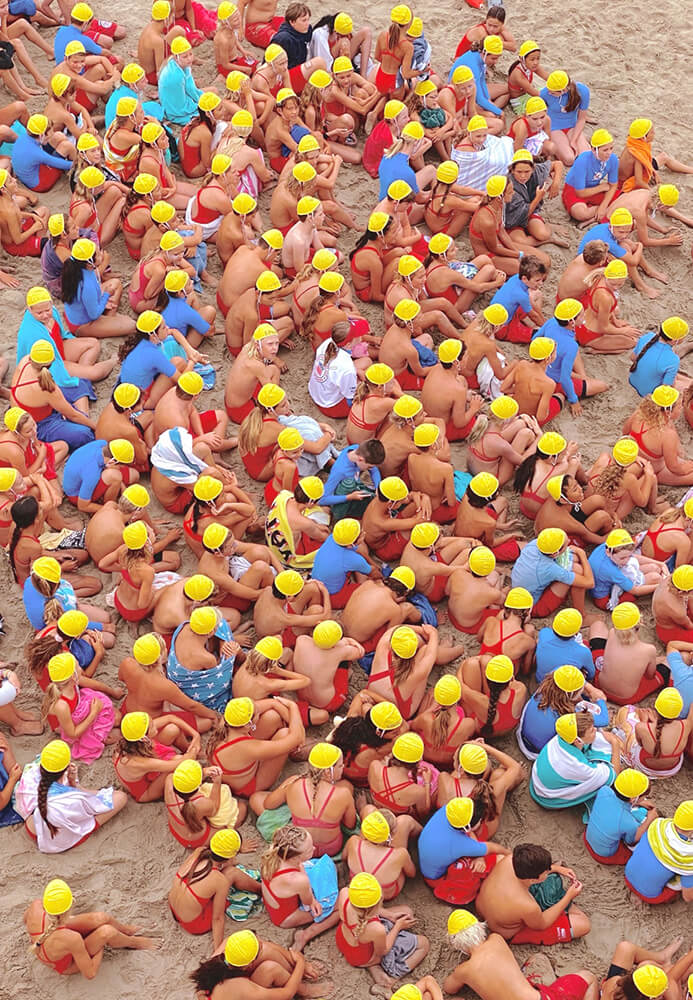
GLEN WILBERT
The photographer cleverly captures this delightful display of color and pattern, an organic by-product of this beach gathering of young swimmers. A sense of obligation, impatience and importance exudes from the group as they sit with their attention focused in one direction. The viewer is left to ponder the responsibilities and skills this group have been armed with, as well as the adventures ahead. A wonderfully timed photograph. – LIFE FRAMER
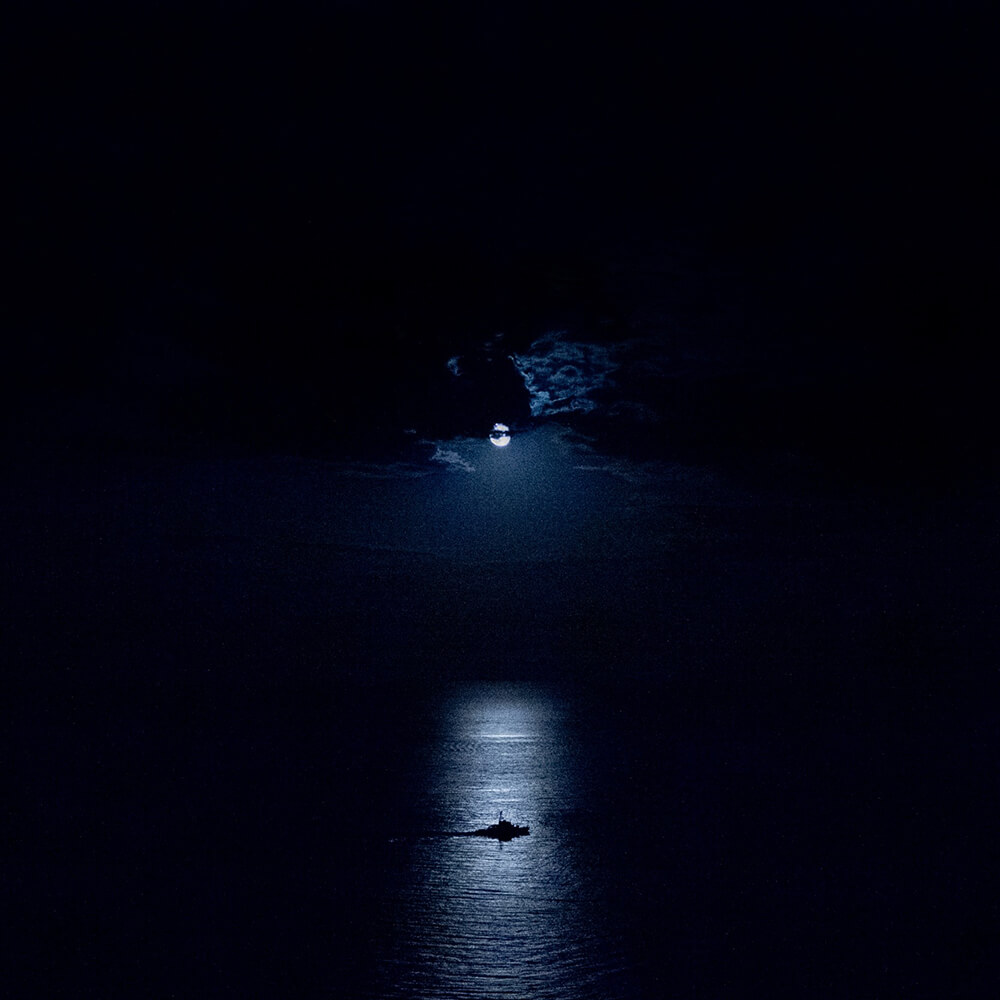
MYKOLA MYRONOV
An image with an unimaginable weight anchoring it. The photographer holds on to the consistency of nature and its beauty while a harrowing war rages on outside their window. However, their hope is clear, reflected in the shimmering beam of moonlight as it pierces the sky and pushes back the darkness. The photograph – all the more powerful for its simplicity – stands as a poignant reminder of resilience and gratitude in the face of extreme adversity. – LIFE FRAMER
Photographer statement – This series was taken during the war in Ukraine. It very clearly shows that even during terrible events, good things happen. You just have to not give up hope. The entire series was shot from the same window of my apartment, where I was locked up for several months. At that time, the view of the sea changed every moment. Not only because the weather was changing. Enemy ships appeared on the horizon, our military boats passed by, and drones with missiles were shot down every few days. All this beauty happened literally outside the window. Now I clearly know, that the best day is today.
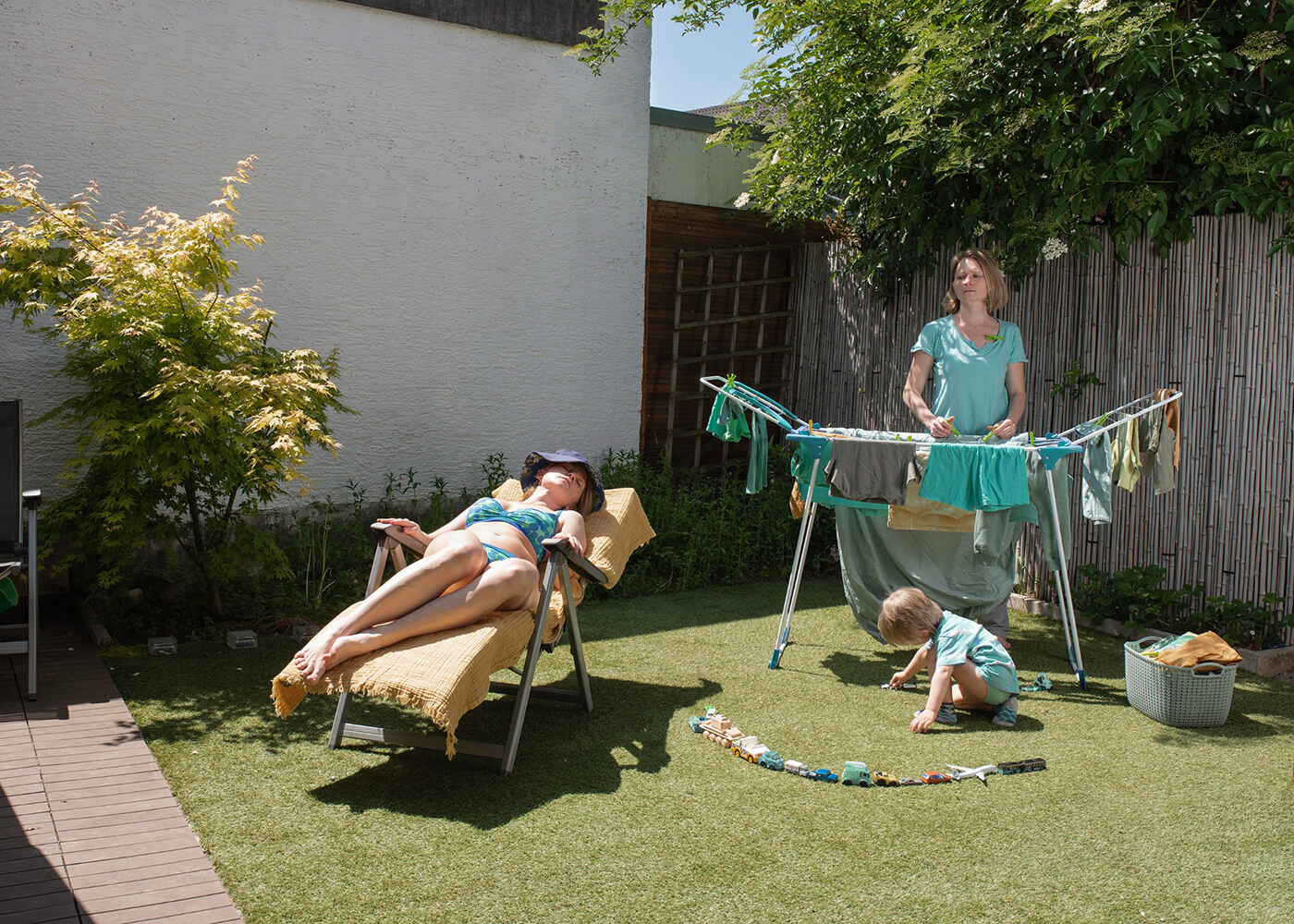
OLGA STEINEPREIS
The photographer presents the viewer with a scenario of one woman’s (yet familiar for many) domestic life as a mother and the responsibilities that accompany, which raises a common but crucial issue – the expectation of women to ‘have it all’. The image splits the subject’s reality and dream – a dream so simple – and pins them against each other as if impossible to hold in balance. It encourages the viewer to question this conventional standard – Why are women put in this situation? And do they even want it ‘all’? – LIFE FRAMER
Photographer statement – From the series I’ve Had a Dream. In the modern world we live under the influence of stereotypes that are shaped by advertising and social networks. These stereotypes are trying to convince us that nothing can change with the birth of a child, whose life fits so easily into a mother’s life. It is still possible to look great and do the things you enjoy. And if you don’t, then you’re just a failure. Society expects us to conform to these stereotypes, and we strive to prove it. But in fact, doing all this with a baby is not so easy. Moms get tired, but there is not always time to rest. And at some point, there comes a dream…
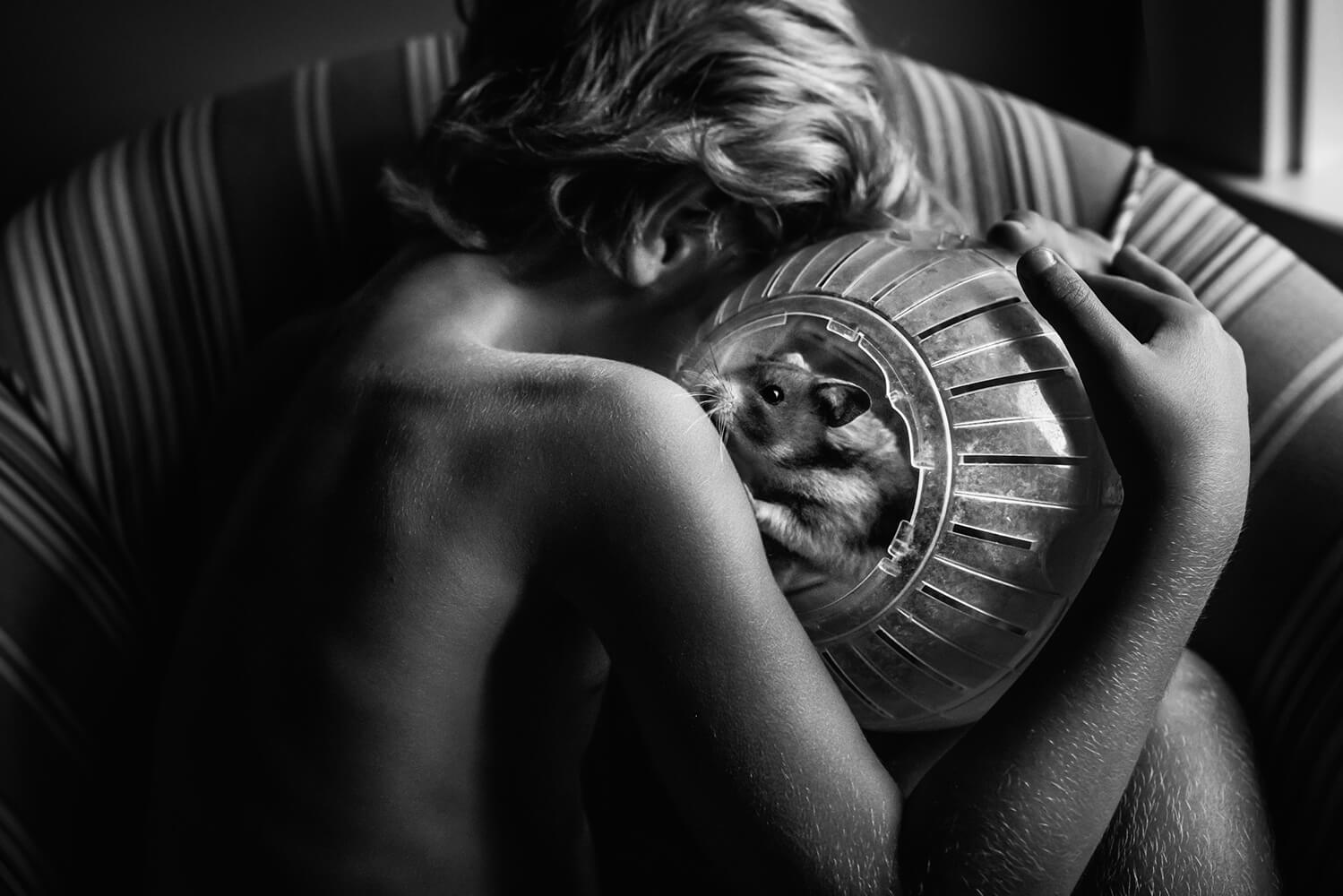
KENNON GUERRY
Fragility, transition and acceptance are all gently at play within this scene, the young boy turns away from the lens and cradles his pet as if protecting them from external threat or influence – much like the nurture and protection of his mother over him. The photographer is honest with their intention to keep their children as they are but also celebrates their new stages of life with her tender imagery. A poetic photograph from motherhood, full of texture and tone. – LIFE FRAMER
Photographer statement – Modern Love, from the series The Season of Childhood. The impulse to create photographs springs from my near desperate drive to capture the details of the changing seasons of childhood. Anticipatory grief for what will be lost to growth and change has been one of many emotional experiences of motherhood for me. I feel the bi-directional pull of wanting my children to stay the same and to grow. I grieve and celebrate every milestone, every centimeter added. Photography is my balm and consolation; it lets me freeze my children in this moment and it lets me release them with joy and gratitude into the next.
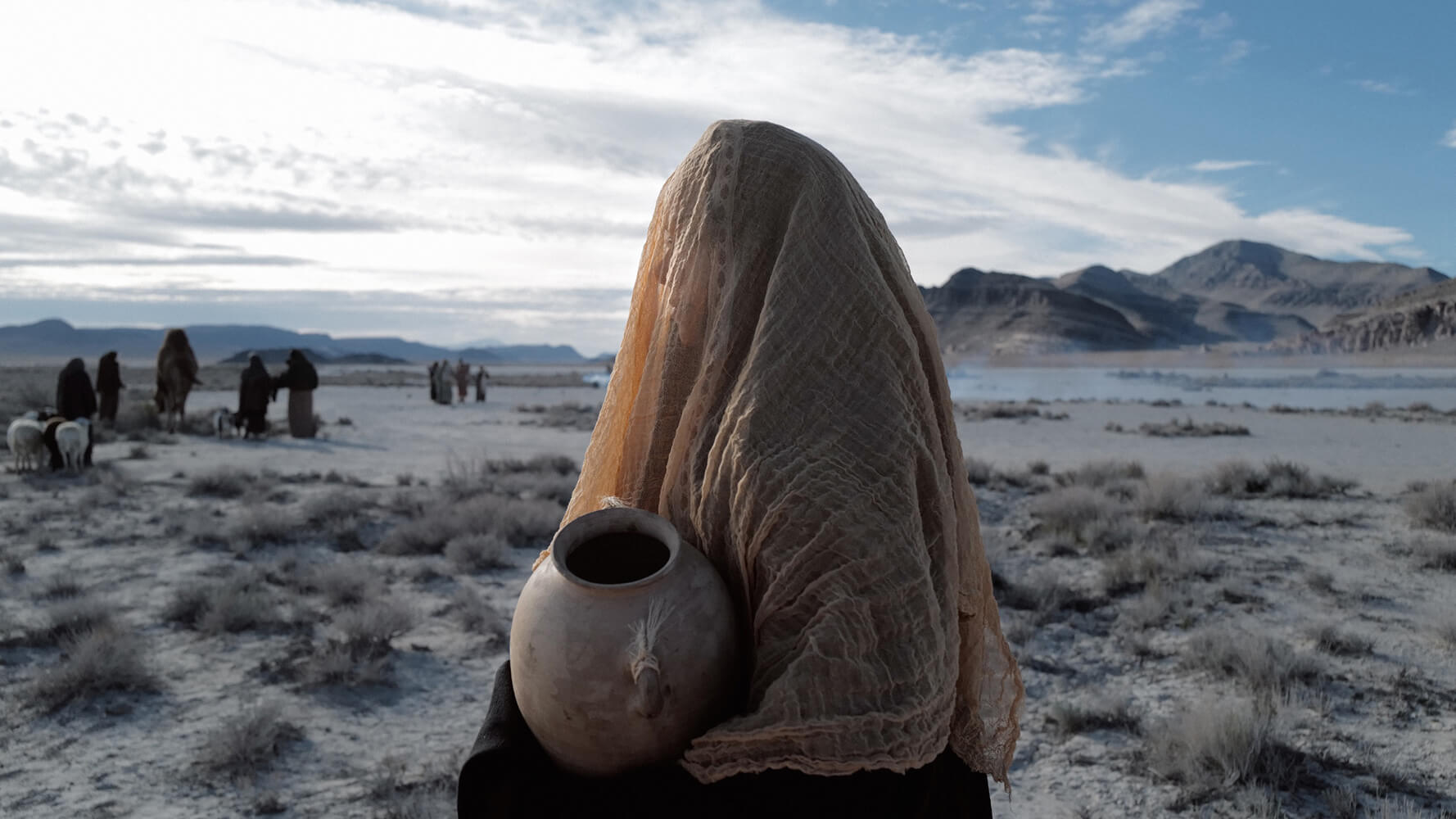
DIEGO CONTRERAS
The viewer is immediately drawn into this woman’s world, identifying with the potentially challenging act – walking through a hot desert with a heavy jug of water – but possibly, not the necessity of it. The photographer specifically uses the word ‘perspective’ allowing the viewer to find ways to connect with this faceless figure. A photographic reminder of humanity’s basic need to access water and how easily it can be politicized – its varied abundance in some parts of the world compared to others. – LIFE FRAMER
Photographer statement – Perspective – A woman walks across the desert carrying a jug full of water.
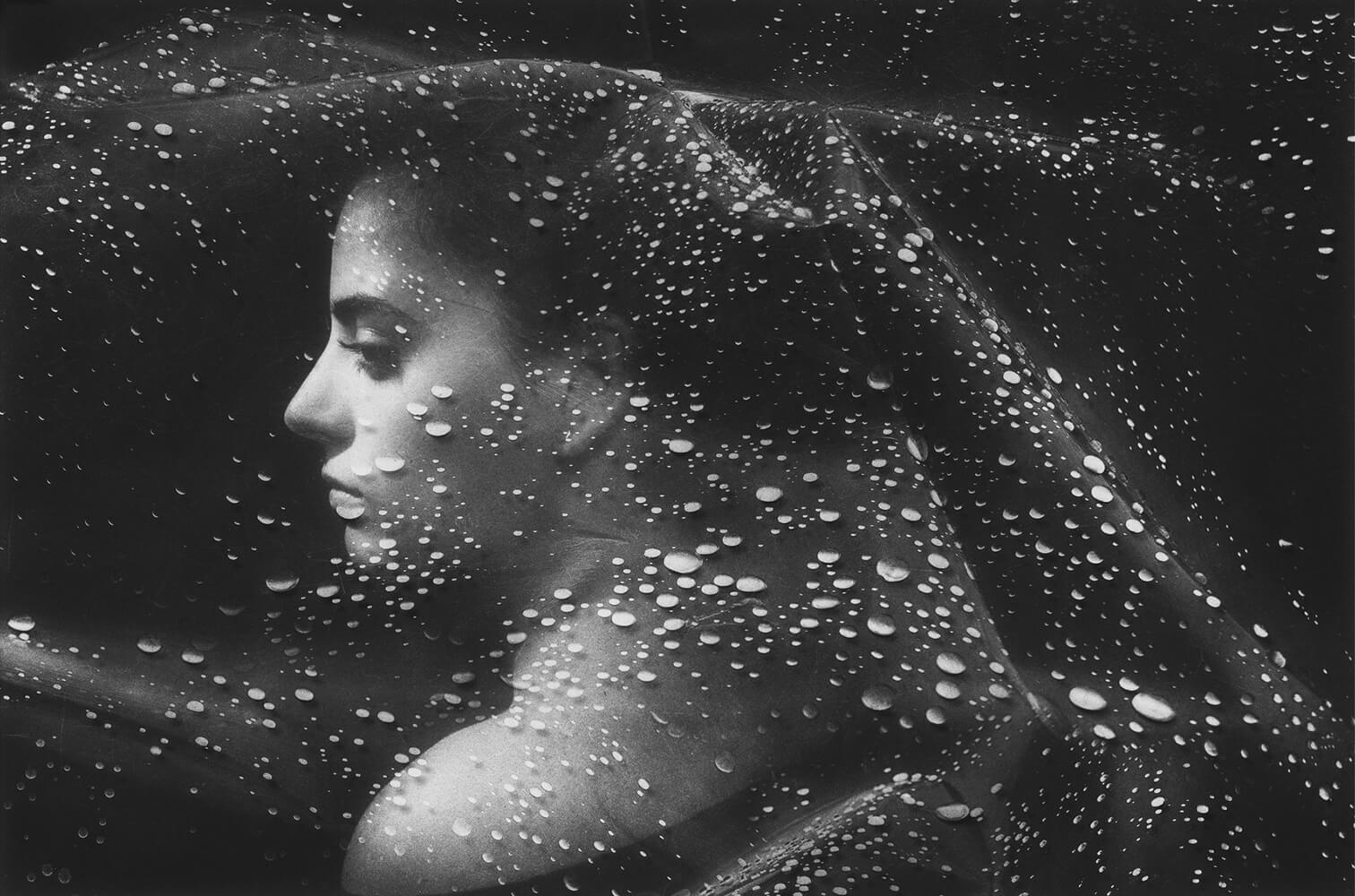
SAVVAS KOIS
This portrait of a dream welcomes the viewer, evoking thoughts on the human subconscious and encouraging questions on the inner communications of our memory – what is truly the experience, and what is just a projection of an idea or concept? The black and white element allows the viewer to take an objective view on the photographer’s vision. Interpreting dreams through photography is an exciting blank canvas, where the photographer can choose from a variety of methods and processes to layer their imagery with symbolism. – LIFE FRAMER
Photographer statement – From the series REM. Dreams could be described as the visualization of stored thoughts that uncontrollably surface from the unconscious and are created due to each one’s experiences. They usually do not have a linear or logical order since the brain draws data from short-term as well as long-term memory, and occur mostly in the “Rapid Eye Movement” phase of sleep. From ancient times to the present day, the world of dreams has occupied man trying to interpret it, usually with parallels, and allegories, giving symbolic meanings to things and situations, sometimes even trying to guess the future through them thus allaying his fears of the unknown. Although science has not yet arrived at a holistic description/explanation of dreams, the “Royal road to the unconscious” has always been, and will be fascinating.
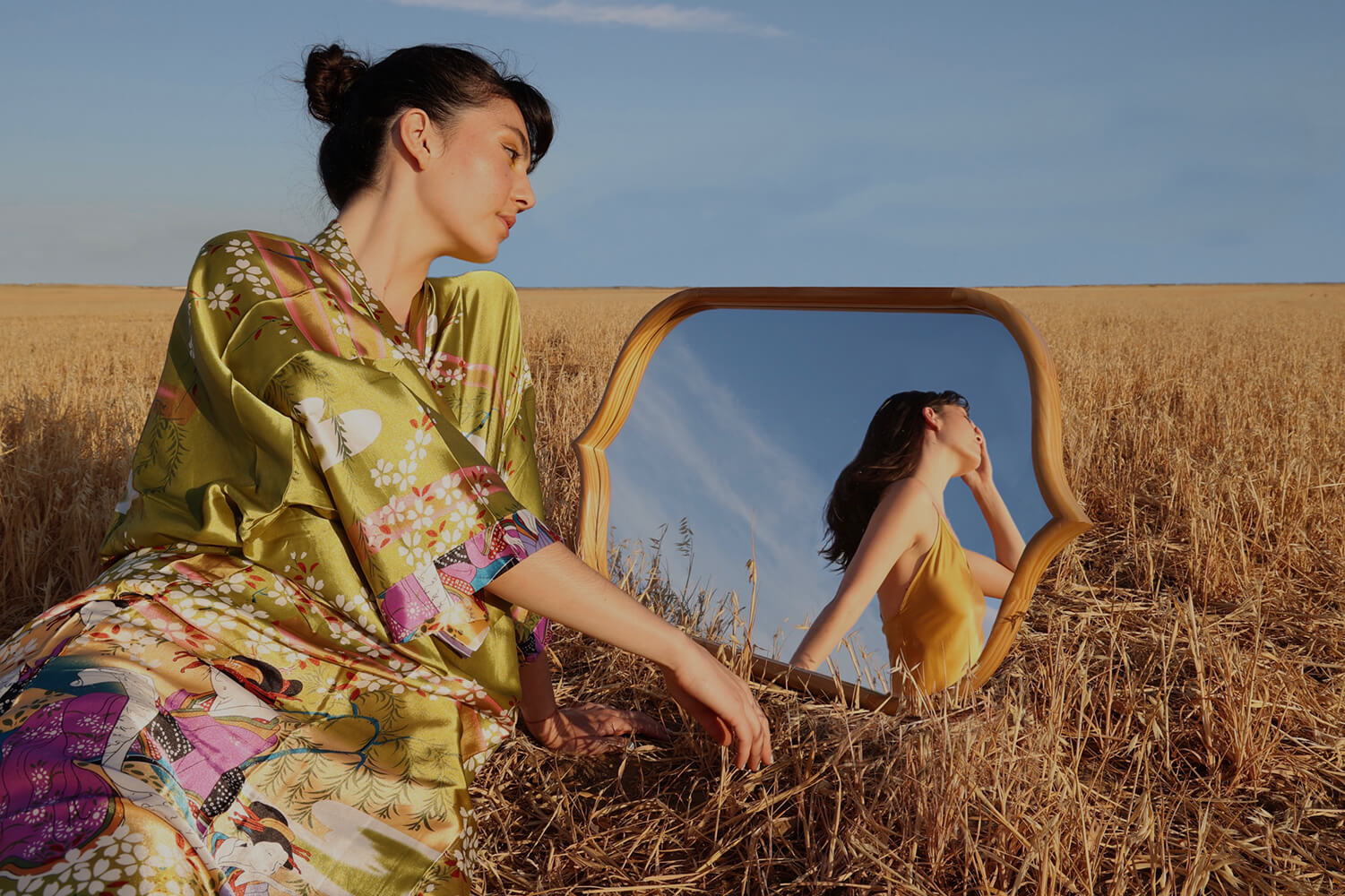
AASHNA DEV
Aesthetically this scene reads like a dreamy and wistful summer themed fashion editorial, but the centered placement of the mirror gives way to a deeper concept of belonging. The silk kimono subtly absorbs and reflects the sun, the item of clothing a possible indicator to one of these cultures the subjects attempts to identify with. A beautifully constructed scene. – LIFE FRAMER
Photographer statement – Part of a photo series entitled “middleness culture”. When one is stuck between two cultures there can be an internal battle that never settles within one’s mind. Ultimately, we try to answer the questions: who am I and where do I actually belong?
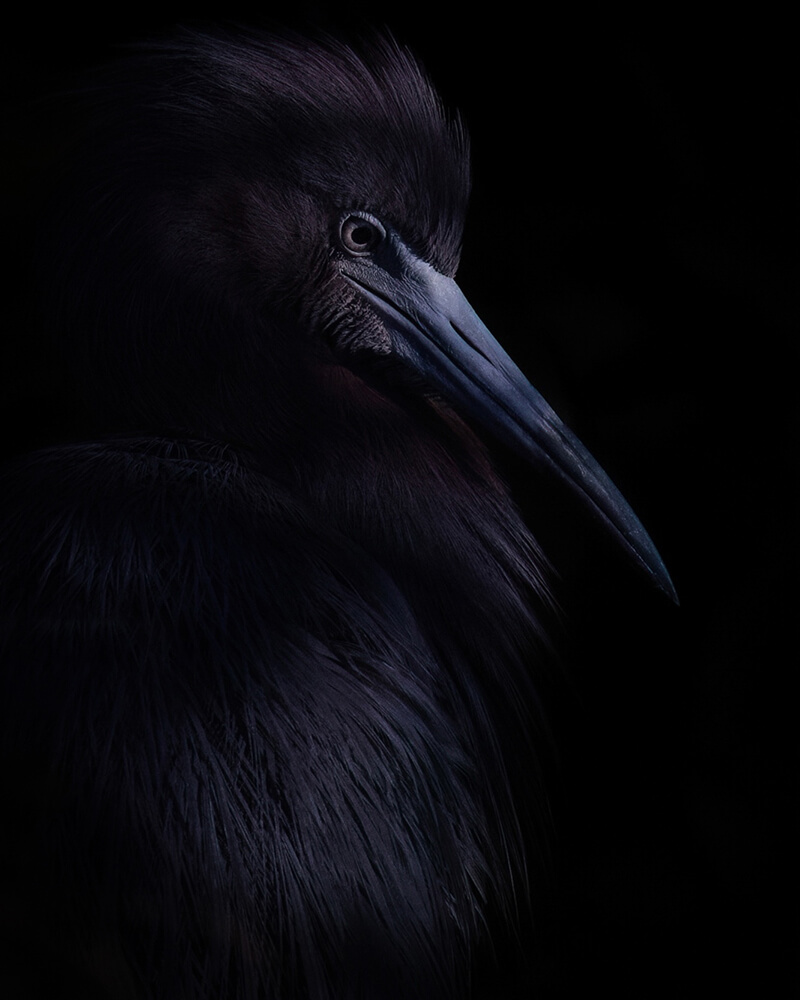
ANDREA BRUNO
It’s difficult to believe the photographer spotted this bird in the first place, never mind capturing a perfect and peaceful portrait of it. When the artist truly enjoys and understands their subject it shows in every inch of their imagery – and this photograph is no exception. A striking scene swallowed in shades of black, where minute details of the bird’s beak and plumage punctuate the image and give it texture. – LIFE FRAMER
Photographer statement – Little Blue Heron hiding in the shadows in Ocean City, New Jersey.
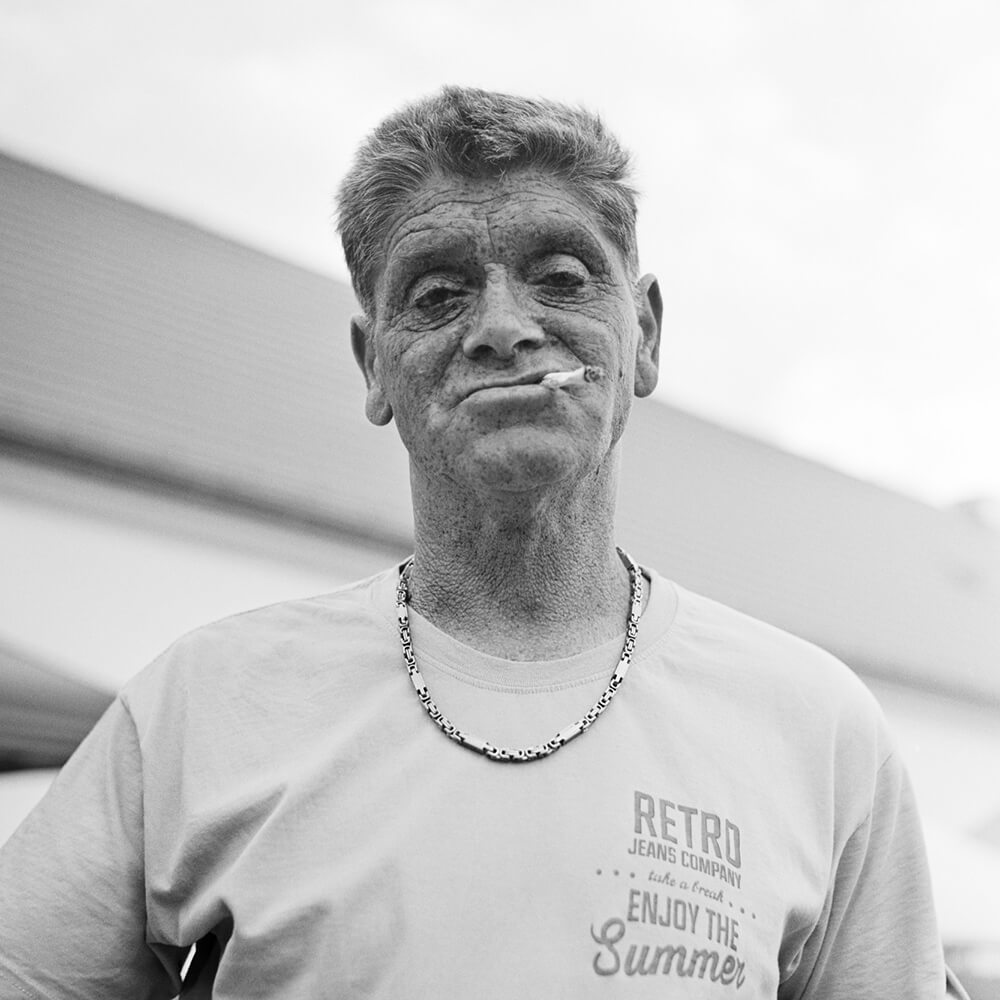
ATTILA ISTVAN NAGY
A characterful face greets the viewer, their confidence and vulnerability equally exhibited in the brief moment of the portrait being taken. Location and time are lost in the image, as the photographer takes a low angle and allows the subject’s personality and life experience to dominate. A dynamic and powerful picture created by both photographer and subject. – LIFE FRAMER
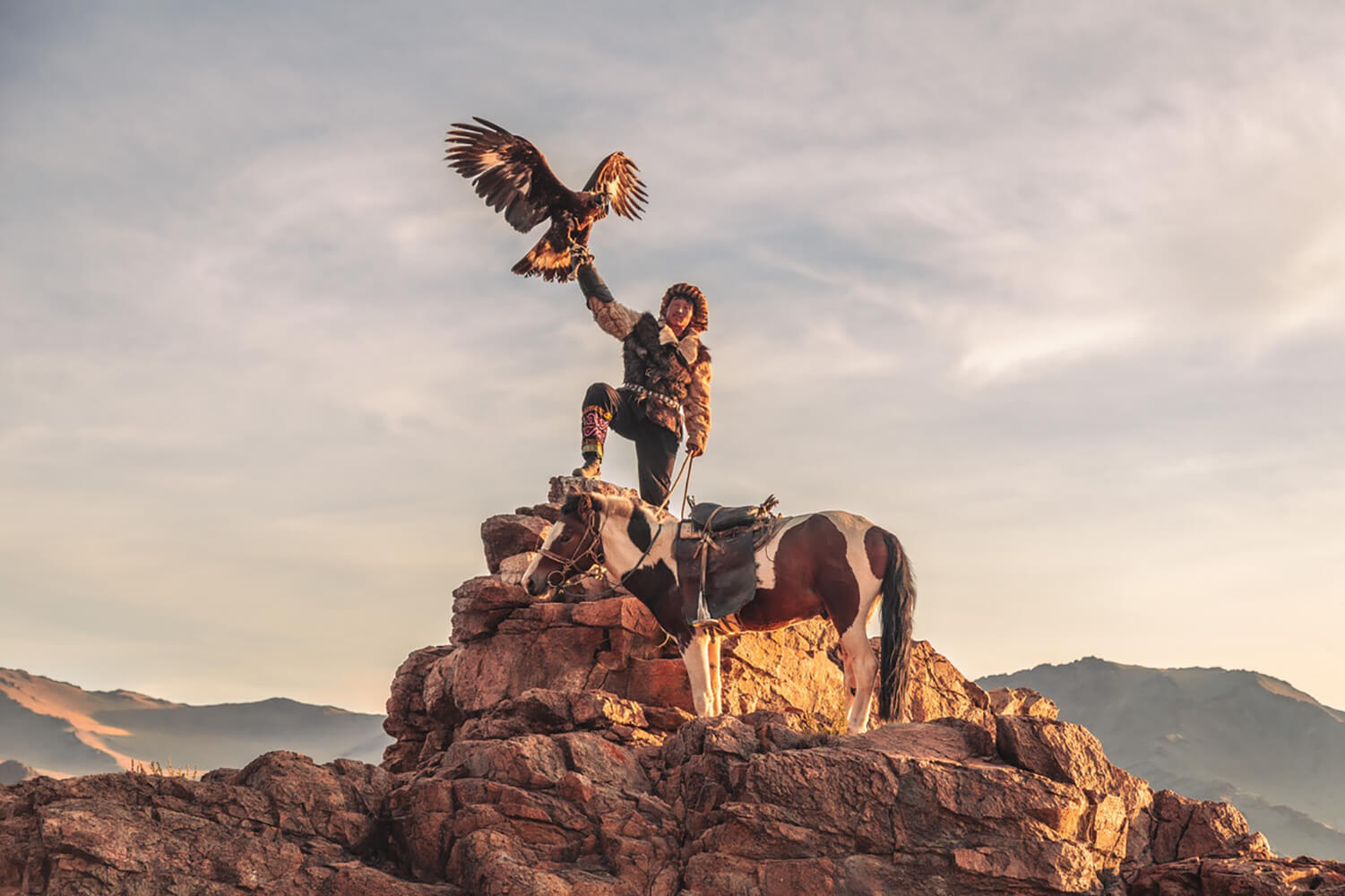
LISE LEINO
Although Mongolian eagle hunters are a well-photographed subject of intrepid photographers, this scene feels like one from a history book or ancient script of tradition – a way of life only heard about but not witnessed or understood. The photographer’s low angle allows the scenery to provide a dramatic backdrop, while perhaps suggesting a level of importance to each species – the eagle becoming the most vital element of this hunting process. A powerful image of culture and inherited values, the full series of this work would be fascinating to see. – LIFE FRAMER
Photographer statement – On top of the mountain flying high. From my series The Eagle Hunters of Mongolia.
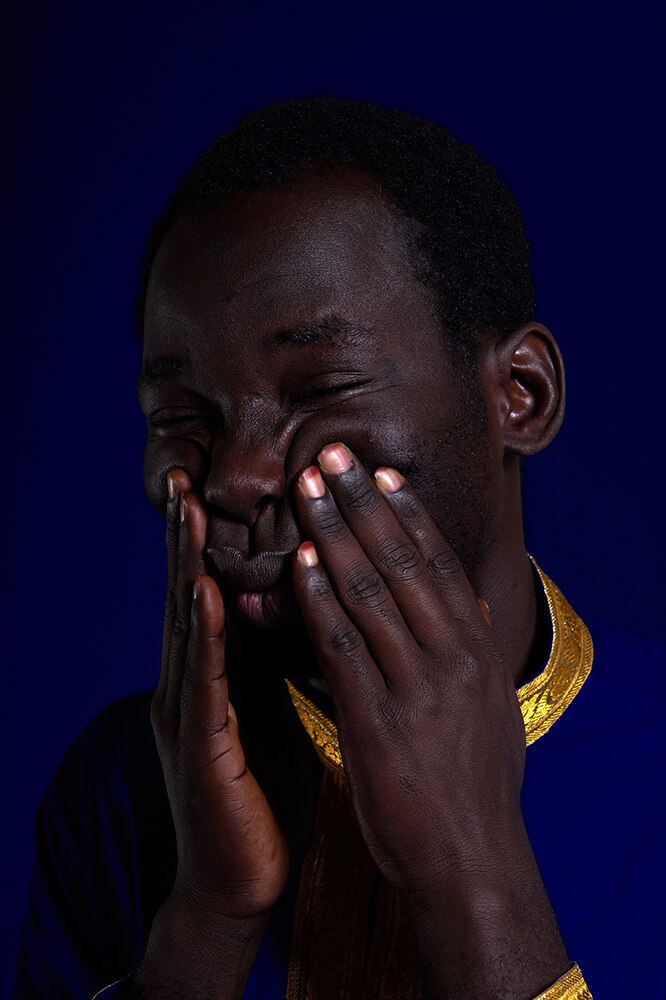
GREGOR BAJT
As the viewer considers the name, or possibly, title ‘Prince’ along with the detailed gold embellishments of his outfit, contradictions begin to seep through: There are the subject’s words describing the hopeful intention to make a new life in a prosperous place, and then their facial expression, one seemingly tired and contemplative. The photographer has skilfully produced this insightful perspective of this young man’s ambitions, potential and reality in one intimate portrait. For a long time the Western world has abused this presumption and promise of success for anyone willing to make the journey and work hard, when the reality is a different experience altogether. – LIFE FRAMER
Photographer statement – From the series Prince Abdu. “In Senegal we have a lot people that go to Europe. When they come back, they have a good house, a good life. They have been working some years in Europe, and their life has changed. So I said to myself, why not?! I will go to check and see what will happen with me in Europe. I came to Europe also to get a good experience, to meet new people and to change my life.”
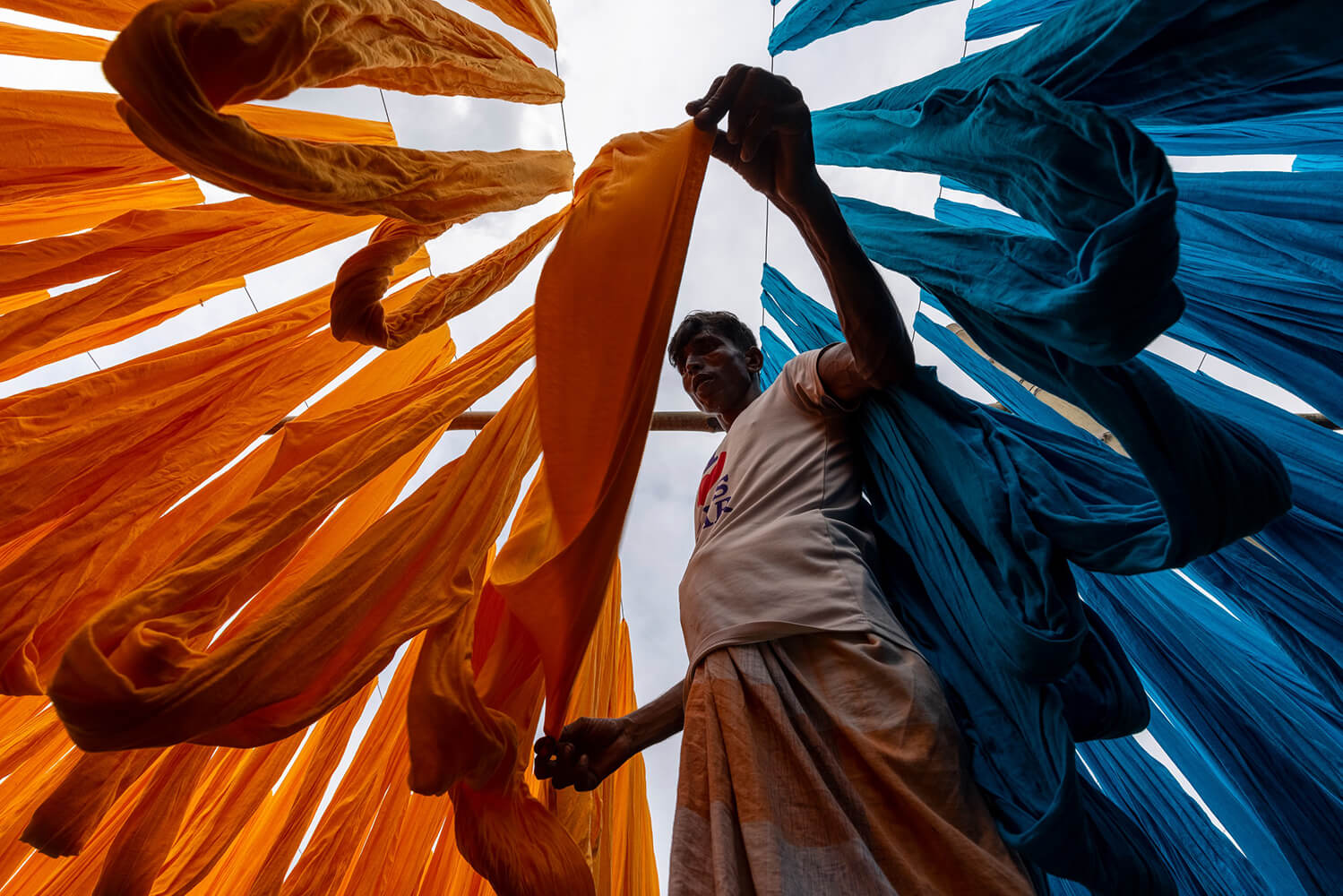
AZIM KHAN RONNIE
The photographer chooses an unusual and effective angle from which to photograph their subject as they work their way through this task, hemmed in by the vibrant, flowing material. The viewer is left to consider the difference between the clothing worn by the subject, specifically their t-shirt, and the clothing that will be made from these dyed fabrics – are they local, traditional craft or for global trade? A striking but well composed image, with an underlying narrative on mass production and fast fashion. – LIFE FRAMER
Photographer statement – Rows of brightly colored fabrics shimmer in reflections as they are hung to dry above a field. Workers hang the vivid clothing on wooden frames as the colorful dyes set in the sun. The clothes will be used for t-shirts, under-vests, trousers and more.
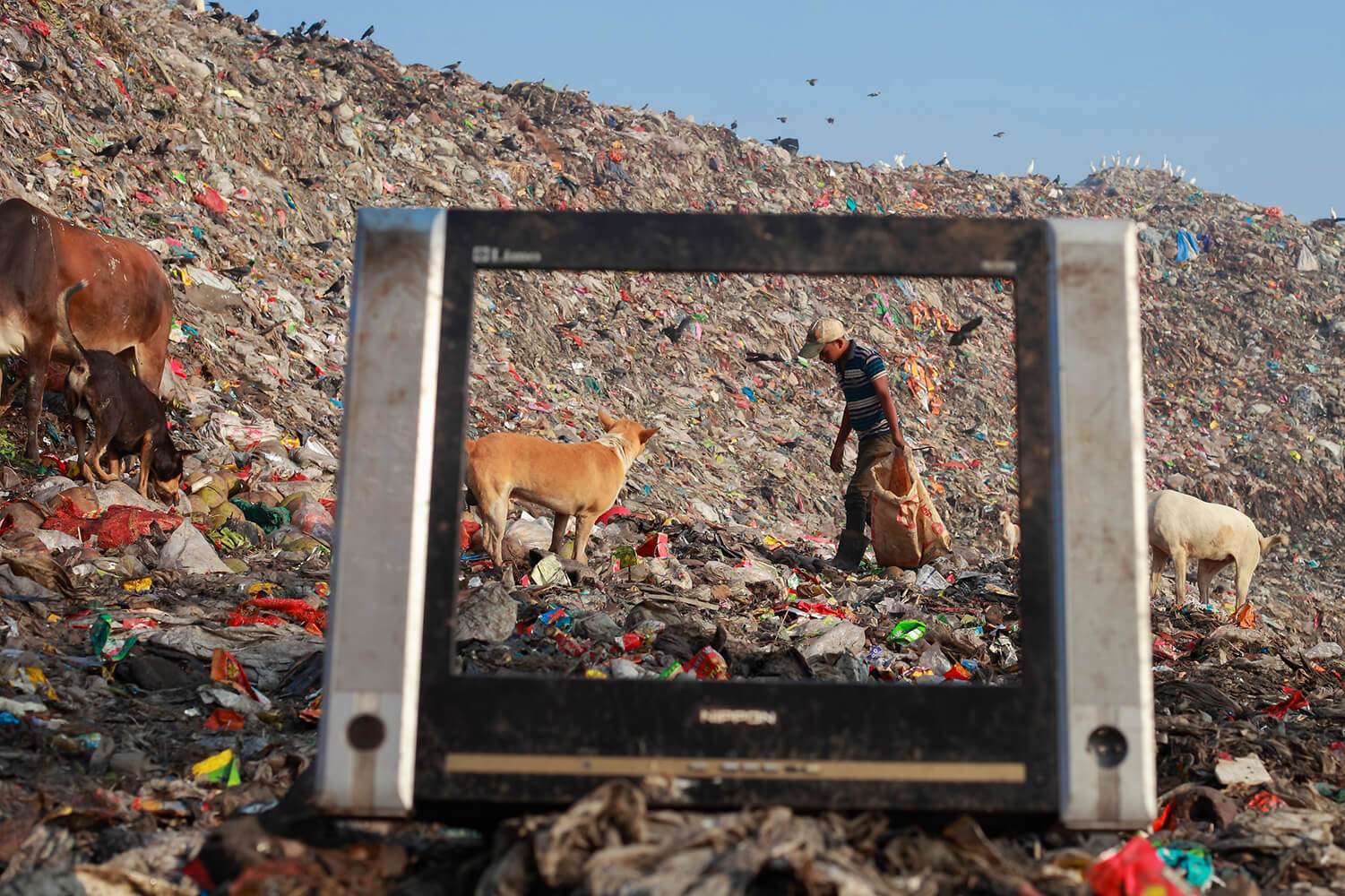
MUHAMMAD AMDAD HOSSAIN
The frame within a frame gives this scene a loose but profound narrative, one in which our connection to and understanding of the waste and pollution crisis can be construed as despondent and uncaring, as if a fictionalised TV show that we can tune in and out of. These mountainous rubbish dumps are not an unfamiliar scene, yet they still exist and grow as grotesque representations of human consumption and excess – the photographer’s caption a possible indication of our failed recycling systems. Not only are these landfills eroding away at the environment and ecosystems but they are specifically located in areas of lower economic stability, forcing the local populations to endure their toxicity and make a living from scavenging there. A significant image of humanity’s shame. – LIFE FRAMER
Photographer statement – Finding the recycling products.